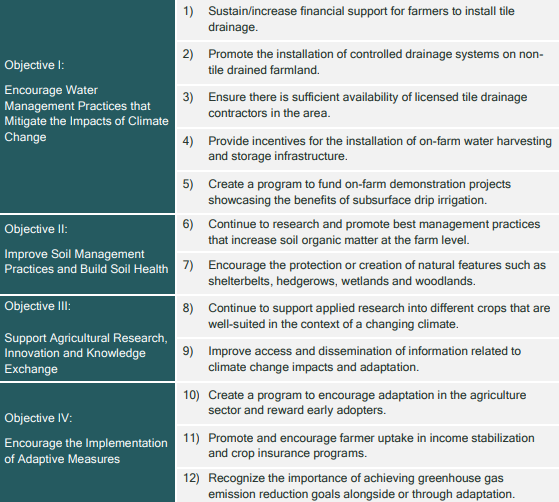Understanding and Assessing Impacts
The OCAAF study used the “delta” approach (or “climate change factor approach”) to downscale Global Climate Model (GCM) outputs by following these main steps:
- Obtain baseline (“average”) climate data using daily CANGRD data for the specified variables for the 1981-2010 baseline period.
- Use the largest possible ensemble of AR5 GCMs to obtain the modelled average climate for the same historical period on a monthly basis (the GCM model resolution), re-gridded as necessary to a common resolution and scale.
- Obtain the future climate for each of the required future periods; every 10 years starting in the year 2011 and ending in the year 2050 (average future conditions of all the models for four 10-year periods) at the monthly timestep.
- Calculate the difference (“delta”) between the baseline and each projected future period which represents the change in the climate variable. Four climate deltas were produced (2020-, 2030-, 2040- and 2050-decade).
- This step addressed the spatial and temporal scale difference between the 10 km resolution and daily CANGRD data and the (approximately) 200 km spatial and monthly temporal resolution of the GCM output. The GCM delta (or change signal) is directly added to the high resolution CANGRD baseline period observed value which then corrects for any difference (or bias) between the true measured baseline climate and the modelled baseline climate, also generating a proxy high resolution projected climate variable for each future period.
Climate change creates both risks and opportunities for Ontario agriculture. Growing seasons are becoming longer and warmer suggesting the potential for northward expansion and creating opportunities for new crop varieties, while extreme events like intensive and prolonged rain and drought can cause immense damage to production systems and are expected to increase in frequency and intensity in the future.

